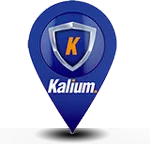TDG Training for Shippers
This training aims to make the shipper autonomous in order to prepare the dangerous goods in accordance with the Transport of Dangerous Goods (TDG) regulations.
We cover all 17 parts of the regulations along with the following topics:
- Proper shipping names designation
- Safety Marks
- Documentation
- Classification (9 hazard classes)
- Appropriate standardized containers
- Emergency response assistance plans
- Exemptions
- Provincial regulations (tunnels, load securement)
- Marine transportation in Canadian waters
- Ferries
- Packaging and shipping exercises
- How to use regulations for future amendments
- Site Registration Requirements
We privilege enjoyable learning with the help of games and didactic material. Each participant will receive a training booklet for future reference and a training certificate in accordance with Transport Canada standards.


1 - Summary and objectives of the training
Did you know that the handling of dangerous goods requires your employer to certify your training in the Transportation of Dangerous Goods Regulations (TDGR)? Did you know that in the event of an offence, a 5-year statute of limitations applies, and that each day is considered a separate offence during this period?
These obligations are too often ignored. Nevertheless, the TDGR is an integral part of operations for most companies in chemistry-related fields. In addition to WHMIS labelling and the Consumer Chemicals and Containers Regulations (CCCR), TDGR labelling is present in our workplaces. This presence, although fully acceptable, unilaterally requires staff to undergo training and recertification every 3 years in these regulations.
2 - Training outline
Module 1: Regulatory Context
Module objectives:
Be able to:
- Link the UN involvement in the TDGR
- Analyze the impact of non-compliance with the TDGR
- Assess whether RTDG training is mandatory in your workplace
- Distinguish risks not covered by the TDGR
- Understand the need for comprehensive classification.
1.1 History of TDGR in Canada
1.2 Legal responsibilities of each of the TDGR actors
1.2.1 The shipper and importer, the carrier and the handler
1.2.2 Offences and Penalties
1.3 TDGR Classification
1.3.1 What is Dangerous Goods (DG)?
1.3.2 Proof of classification
1.3.3 Definitions of classes 1 to 9
1.3.4 Lithium batteries (an introduction)
1.3.5 Identification of the need for an Emergency Response Assistance Plan (ERAP)
Module 2: Documentation
Module objectives:
Be able to:
- Judge the compliance of a shipping document
- Analyze good practices for submitting a shipping document
- Apply the requirements of the standard to your own shipping documents
2.1 Regulatory Requirements
2.2 Proper presentation of the shipping description
2.3 Additional Information
Module 3: Safety Marks
Module objectives:
Be able to:
- Judge the compliance of Safety Marks on a Truck Judge the compliance of Safety Marks on a Package
- Properly complete the marks and labelling of a package
- Evaluate acceptable equivalent indications requiring placards
- Explain to a carrier your reasoning leading to your choice of identifiers
3.1 Labels
3.2 Marking and labelling of a small container
3.3 Marking and labelling of a large means of containment
3.4 Regulatory use of placards in transport
3.5 Overpack
Module 4: Packaging loading and reporting
4.1 Characteristics of standardized packaging
4.2 Introduction to TP14850 and 14877
4.3 UN mark on packaging
4.4 Loading a trailer
4.5 Spills and Reporting
Module 5: Exemption and Training
Module objectives:
Be able to:
- Justify the need to be trained in the TDGR to your employer
- Properly apply limited quantity exemptions
- Identify situations that can benefit from exemptions
- Synthesize regulations in real situations
5.1 Limited quantity exemption
5.2 Fuel exemption 1.33 and other exemptions
5.3 Passage through a tunnel
5.4 IMDG Training Overview (boat)
5.5 IATA Formation Flyover (aircraft)
5.6 Reciprocity CAN-USA
5.7 Other regulatory contexts
5.8 Exercises find errors
Frequently asked questions
What is the purpose of the TDG Training for Shippers course?
The purpose of TDG training for shippers is to familiarize participants with TDG regulations so that they can ship dangerous goods safely and compliantly. Following the training, they will be able to perform all tasks related to the transport of dangerous goods, such as drafting bill of lading, identifying packages, choosing packaging and much more.
Who should enroll in the TDG Training for Shippers?
Any employee who performs tasks related to the shipment of dangerous goods must be TDG-trained. These tasks include, among others, packing goods, labeling, writing bills of lading and loading goods onto trucks. If an employee who is not TDG-trained performs TDG-related tasks, he or she must be supervised at all times by a colleague holding a valid TDG certificate.
What topics are covered in the TDG Training for Shippers?
Our TDG training covers all parts of the TDGR and meets the criterion of appropriate training as written in section 6.2. Our training covers all the subjects mentioned in section 6.2: "the classification criteria and test methods in Part 2 (Classification); shipping names; the use of Schedules 1, 2 and 3; the shipping document and train consist requirements in Part 3 (Documentation); the dangerous goods safety marks requirements in Part 4 (Dangerous Goods Safety Marks); the certification safety marks requirements, safety requirements and safety standards in Part 5 (Means of Containment); the ERAP requirements in Part 7 (Emergency Response Assistance Plan); the report requirements in Part 8 (Reporting Requirements); safe handling and transportation practices for dangerous goods, including the characteristics of the dangerous goods; the proper use of any equipment used to handle or transport the dangerous goods; and the reasonable emergency measures the person must take to reduce or eliminate any danger to public safety that results or may reasonably be expected to result from an accidental release of the dangerous goods."
How long does the TDG Training for Shippers take to complete?
TDG training for shipper is 6 hours long. It includes practical exercises for each of the modules covered, to ensure that learning is fully integrated. The training also concludes with a knowledge evaluation to ensure that all participants will be able to handle, request transportation or transport dangerous goods.
Is the TDG Training for Shippers available online or only on-site?
Training is available either at your workplace or via videoconference. In both cases, a qualified instructor will give the course and be on hand to answer any questions.
Will I receive a certificate upon completing the TDG Training for Shippers?
Yes, you will receive a certificate containing the information specified in section 6.3: "the name and address of the place of business of the employer, the employee's name, the date the training certificate expires, preceded by the words 'Expires on' or 'Date d'expiration' and the aspects of handling, offering for transport or transporting dangerous goods for which the employee is trained, including the specific topics set out in section 6.2." Also, "the training certificate must be signed by the employee and by the employer or another employee acting on behalf of the employer."
How often do I need to renew my TDG certification?
As mentioned in Section 6.5 of the TDGR, a training certificate expires 36 months after its date of issuance for transport by road vehicle. It's important to note that the certificate is not transferable from one company to another, so if you change jobs, you'll have to take the training again with your new employer, even if the training is less than 3 years old, since the certificate must be signed by the employer.
Are there any prerequisites for enrolling in the TDG Training for Shippers?
There is no prerequisite to register for TDG training. Our TDG training for shipper is suitable for all levels, from beginner to expert. The trainer will make sure everyone understands
Does the training include practical exercises or is it purely theoretical?
TDG training includes practical exercises for each of the modules covered, to ensure that learning is fully integrated. For example, participants will draw up a dangerous goods bill of lading, and will be asked to place hazard markings on packages. The training also concludes with a knowledge assessment to ensure that all participants will be able to handle, request transport or transport dangerous goods.
How can I register for the TDG Training for Shippers course?
You can contact us through our "Contact an expert!" boxes on the various pages of our website, or by calling 450 906-6999.

Design, programming and hosting by VisionW3.com


